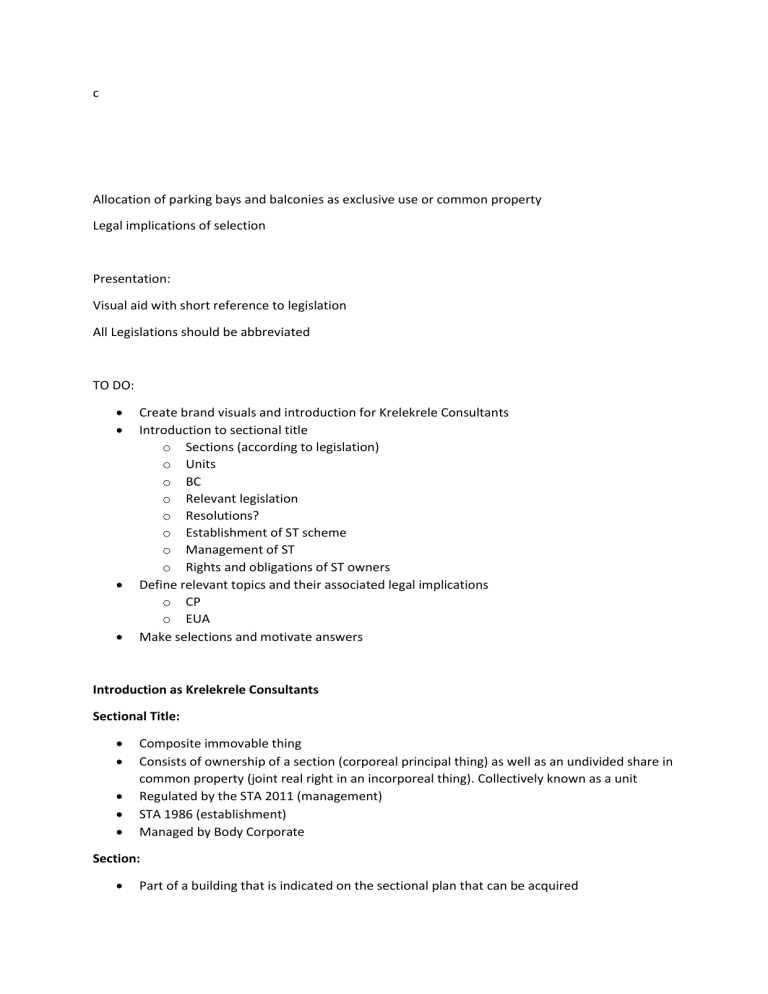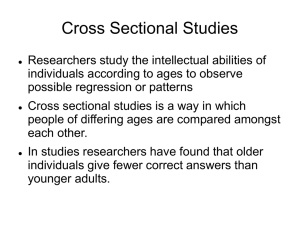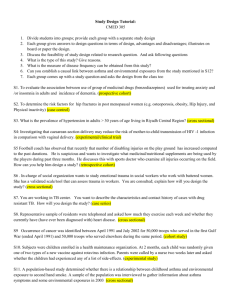
c Allocation of parking bays and balconies as exclusive use or common property Legal implications of selection Presentation: Visual aid with short reference to legislation All Legislations should be abbreviated TO DO: Create brand visuals and introduction for Krelekrele Consultants Introduction to sectional title o Sections (according to legislation) o Units o BC o Relevant legislation o Resolutions? o Establishment of ST scheme o Management of ST o Rights and obligations of ST owners Define relevant topics and their associated legal implications o CP o EUA Make selections and motivate answers Introduction as Krelekrele Consultants Sectional Title: Composite immovable thing Consists of ownership of a section (corporeal principal thing) as well as an undivided share in common property (joint real right in an incorporeal thing). Collectively known as a unit Regulated by the STA 2011 (management) STA 1986 (establishment) Managed by Body Corporate Section: Part of a building that is indicated on the sectional plan that can be acquired Common Property: The land and all parts not included in the sections Controlled by body corp Participation Quotas: Calculated in proportion to undivided shares in property Residential purposes only- divide floor area of section by total floor area of all sections Determines: extent of owners share, value of vote at meeting, extent of levy, amount of liability Exclusive use areas: Areas that are only allowed to be used by a specific owner or owners, subject to rules and regulations of sectional title scheme Body Corp: Legal entity Made up of owners in ST Financial, administrative and physical needs Established by developer by opening a sectional title register on the day of the first transfer, when enough owners are reached, developer will hold first general meeting to formally establish BC 1.2 What does a sectional title owner actually own? A sectional title owner owns a “unit” in the sectional title scheme. A unit consists of a section (such as a fat or townhouse) and an undivided share (or percentage) of the common property i.e. areas that are shared and used by everyone. Some parts of the common property can also be designated as exclusive use areas, which means that just one owner or group of owners can use them (for example, parking bays or private garden areas). Potentially Relevant Clauses: 16. (1) The common property shall be owned by owners of sections jointly in undivided shares proportionate to the quotas of their respective sections as specified on the relevant sectional plan. 45 (2) A sectional title deed in respect of a section shall, in a separate paragraph, describe the undivided share in the common property of the owner of the section as an undivided share in the common property apportioned to the section in accordance with the quota of the section. 50 (3) A section and its undivided share in the common property shall together be deemed to be one unit, and no section shall be disposed of or be otherwise dealt with apart from its appurtenant undivided share in the common property nor, subject to section 17, shall an undivided share in the common property be 55 disposed of or be otherwise dealt with apart from the section to which it is appurtenant. ( 4) Any insurance of a section shall be deemed also to insure the undivided share in the common property of the owner of the section, even if no express reference is made to such share. No. 10440 33 Act No. 95, 1986 Ownership of common property. 60 17. (1) The owners may by unanimous resolution direct the Dealingswith body corporate on their behalf to alienate common property or common property· any part thereof, or to let common property or any part thereof GOVERNMENT GAZETTE, 17 SEPTEMBER 1986 SECITONAL TITLES ACT, 1986 under a lease, and thereupon the body corporate shall, notwithstanding any provision of section 20 of the Deeds Registries Act, but subject to compliance with the provisions of any relevant law relating to the subdivision of land or to the letting of a part of 5 land, as the case may be, have power to deal with such common property or such part thereof in accordance with the direction, and to execute any deed required for the purpose. (2) Any transaction in pursuance of a resolution referred to in subsection (1) shall be accompanied by a copy of the relevant 10 resolution, certified by two trustees of the body corporate: Provided that where the transaction in question requires to be notarially executed, such resolution so certified shall be produced to the notary public concerned and be retained by him in his protocol. 15 20 25 30 35 40 45 50 55 60 (3) The registrar shall- ( a) if the holders of bonds over units in the scheme consent in writing thereto, register transfer of land comprised in the common property by issuing to the transferee a certificate of registered sectional title in the prescribed form for the land transferred, and thereupon the land shall revert to the land register and the registrar shall make an appropriate endorsement and entry on such title and in his records to give effect thereto: Provided that if a portion only of the land comprised in the common property is so transferred, no endorsement thereof shall be made on the sectional title deeds of the owners of units: Provided further that in such a case where a portion only of the land comprised in the common property is tranferred, a diagram of such portion approved by the Surveyor-General in terms of the Land Survey Act, 1927 (Act No. 9 of 1927), shall be annexed to the said title deed; (b) notify the Surveyor-General of any reversion of any land to the land register under the provisions of paragraph (a), and upon receipt of such notification the Surveyor-General shall make an appropriate endorsement on the original sectional plan and the deeds registry copy thereof; and (c) if the holders of bonds over units in the scheme consent in writing thereto, register a notarial lease of land comprising common property by making an appropriate endorsement against the schedule of conditions referred to in section 11 (3) (b), and no endorsement thereof shall be made on the sectional title deeds of the units. (4) (a) Where, pursuant to the provisions of subsection (1), it is sought to alienate or to Jet a portion of the common property on which a section or part of a section is erected, the registrar shall not register the transfer or lease unless the registration of the section in question has been cancelled with the written consent of the owner. (b) When the registration of a section is cancelled under paragraph (a), the quota of the section shall lapse and the quotas of the remaining sections shall be proportionately adjusted. (c) The registrar shall.notify the SurveyorGeneral whenever the registration of a section has been cancelled under paragraph (a), and upon receipt of such notification the Surveyor-General shall effect the necessary amendments to the original sectional plan, the deeds registry copy of the sectional plan and the schedule thereto specifying the quota of each section. (5) When the whole of the land comprised in the common 65 property shown on the sectional plan is transferred by the body corporate pursuant to this section, the sectional title deeds of the No.10440 35 Act No. 95, 1986 GOVERNMENT GAZETIE, 17 SEPTEMBER 1986 SECTIONAL TITLES ACT, 1986 owners of the common property shall be surrendered to the registrar for cancellation, and the registrar shall close the sectional title register and notify the Surveyor-General and the local authority that the sectional title register has been closed. 5 (6) Upon receipt of the notification referred to in subsection (5), the Surveyor-General shall cancel the original sectional plan and the deeds registry copy of the sectional plan. EXCLUSIVE USE OF COMMON PROPERTY AND SERVITUDES 27. (1) (a) If a part or parts of common property is or are de20 lineated on a sectional plan in terms of section 5 (3) (f), the developer shall, when making application for the opening of a sectional title register and the registration of the sectional plan, impose a condition in terms of section 11 (2) in the schedule referred to in section 25 11 (3) (b), by which the right to the exclusive use of such part or parts of the common property delineated for this purpose on the sectional plan, is conferred upon the owner or owners of one or more of the sections, and the registrar shall not accept for registration 30 a sectional plan on which a part or parts of the common property is so delineated, unless the developer imposes any such condition conferring any such right for a specific purpose on the owner or owners of a section or sections. 35 (b) A developer shall cede the right to the exclusive use of part or parts of the common property to the owner or owners to whom such rights are allocated, by the registration of a unilateral notarial deed in their favour. (2) A body corporate, duly authorized thereto by a unanimous 40 resolution of its members, may, subject to the provisions of section 5 (1), request an architect or land surveyor to apply to the Surveyor-General for the delineation on a sectional plan in the manner prescribed of a part or parts of the common property in terms of section 5 (3) (f) for the exclusive use by the owner or 45 owners of one or more sections: Provided that no such delineation shall be made on the sectional plan in terms of this subsection if such delineation will encroach upon a prior delineation on the sectional plan of a part of the common property for the exclusive use by one or more of the owners. 50 (3) The body corporate, duly authorized thereto by a unanimous resolution of its members, shall transfer the right to the exclusive use of a part or parts of the common property delineated on the sectional plan in terms of subsection (2) to the owner or owners on whom such right has been conferred by the 55 body corporate, by the registration of a notarial deed entered into by the parties and in which the body corporate shall represent the owners of all the sections as transferor. (4) An owner of a section in whose favour the right to the exclusive use of a part of the common property delineated on the 60 sectional plan is registered, may with the written consent of the mortgagee of the relevant section transfer his interest in such right to the owner of another section in the building by the registration by the registrar of a notarial deed of cession entered into No.l0440 51 Act No. 95, 1986 Rights of exclusive use of parts of common property. GOVERNMENT GAZETTE, 17 SEPTEMBER 1986 SECfiONAL TITLES ACf, 1986 by the parties: Provided that where such right is enjoyed jointly with the owners of other sections, the consent in writing of such other owners to the transfer shall be produced to the registrar. (5) A right to the exclusive use of a part of the common propS erty delineated on the sectional plan registered in favour of an owner of a section may with the written consent of the mortgagee of the relevant section be cancelled by the registration by the registrar of a notarial deed of cancellation entered into by the owner of the section entitled to such right and the body cor10 porate, duly authorized by a special resolution of its members, on behalf of all the owners of sections in the building. (6) A right to the exclusive use of a part of common property registered in favour of an owner of a section, shall for all purposes be deemed to be a right to urban immovable property 15 which admits of being mortgaged. 20 25 30 35 28. (1) There shall be implied- ( a) in favour of each section- (i) a servitude for the subjacent and lateral support of the section by the common property and by any other section capable of affording such support; (ii) a servitude for the passage or provision of water, sewerage, drainage, gas, electricity, garbage, artificially heated or cooled air and other services, including telephone, radio and television services, through or by means of any pipes, wires, cables or ducts existing on or under the land or in the building, to the extent to which such pipes, wires, cables or ducts are capable of being used in connection with the utilization of the section; and (b) against each section- (i) a servitude for the subjacent and lateral support of the common property and of any other section capable of enjoying such support; (ii) the servitudes referred to in paragraph (a) (ii) through or by means of any pipes, wires, cables or ducts existing within such section, in favour of the common property and in favour of any other section capable of enjoying such servitudes. (2) The servitudes referred to in subsection (1}- 40 (a) shall be deemed to be incorporated in the title deeds of the owners affected thereby; and (b) shall confer on the owners of sections the right, to be exercised by the body corporate, to have access to each section and the exclusive use areas from time to time 45 during reasonable hours to the extent necessary to maintain, repair or renew any part of the building or any pipes, wires, cables or ducts therein, or for making emergency repairs therein necessary to prevent damage to the common property or any other section or sec50 tions. Introduction as Krelekrele Consultants Sectional Title: Composite immovable thing Consists of ownership of a section (corporeal principal thing) as well as an undivided share in common property (joint real right in an incorporeal thing). Collectively known as a unit Regulated by the STA 2011 (management) STA 1986 (establishment) Managed by Body Corporate Section: Part of a building that is indicated on the sectional plan that can be acquired Common Property: The land and all parts not included in the sections Participation Quotas: Calculated in proportion to undivided shares in property Residential purposes only- divide floor area of section by total floor area of all sections Determines: extent of owners share, value of vote at meeting, extent of levy, amount of liability Establishing a ST (CSOS Doc) : The responsibilities of our company will include: FORM B - NOTICE OF AMENDMENT OF RULES ✓ Copy of the Rules ✓ Approved Sectional Plan ✓ If Annex 1 and 2 are adopted- Conveyancer Certificate confirming the adoption ✓ CSOS conduct quality assurance – suggest amendments where necessary ✓ Ombud issue the certificate approving the rules (CSOS) Krelekrele will handle: submission of annual return if form of: FORM CS 2 ✓Audited Financial Statement ✓Minutes of the AGM ✓Any changes to the Executive Committee ✓Any change to the levy schedule

